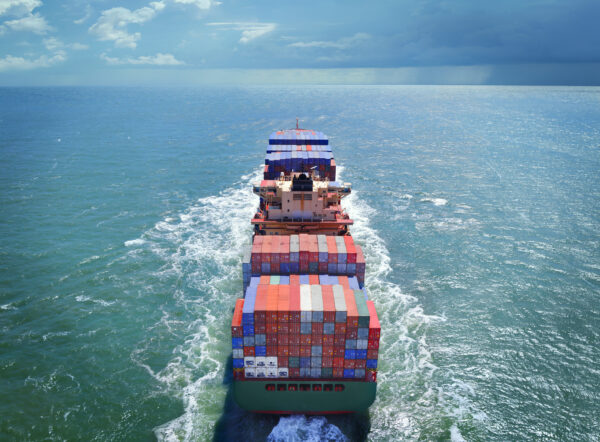Zencargo Transport Update 24th March
Mar 24, 2021
Scroll to find out more
Mar 24, 2021
Scroll to find out more

As capacity remains tight and demand keeps recovering, carriers are able to choose the most profitable routes and loads. The competition for space in this market is also creating opportunities for fraud around contract bookings. In this fast moving environment, it’s essential to be taking a long term, in-depth view of your supply chain and, particularly, your partners.
By tracking shipment and supplier performance, shippers can more effectively prioritise urgent SKUs with reliable freight partners. Transpacific routes are seeing some vessels being rerouted from congested ports, potentially offering more reliable unloading times. Planners and logistics teams should also be focusing on modelling alternative product lead times on route scenarios such as these, as well as planning for contingencies.
| Rates | Rates remained the same for the spot market, however the contract rates are around double levels from pre-covid period. |
| Capacity | A new service from Maersk and MSC to the US East coast will hope to provide extra capacity, while ports are now introducing extra loaders in hopes of establishing a more regular service and meeting demand observed in the ports of Savannah, Charleston and Newark. |
| Equipment | The situation continues to deteriorate. The CAx Container Index indicates a continuous trend of empties accumulating in the West Coast, with the index now sitting at 0.85 this week versus 0.76 four weeks ago. |
| Ports | Congestion continues to improve in Los Angeles and Long Beach ports with 26 vessels currently waiting for berth compared to 37 vessels at the peak of the congestion. However, the secondary ports of Oakland and Savannah have been witnessing an increase in the number of vessels waiting as a consequence of the diversion of services/calls done by carriers to avoid Los Angeles and Long Beach. |
| Rates | Rates in the spot market are still on a downward trend, and the expectation is once April rates are released we see further decreases announced. Contract rates indicate an increase of around 3 times more compared to the pre-COVID levels. |
| Capacity | Generally the current capacity seems to be able to cope with demand with no major reports of lack of space in the trade. |
| Equipment | Felixstowe move count restrictions remain, but reports indicate that the turnaround time for hauliers in the port is around 35 minutes. |
| Rates | Rates remained high with the announcement of GRI still in place. |
| Capacity | There is a general shortage of space. ONE has stopped accepting new bookings from customers that do not have a volume commitment agreement in place. The general space shortage is being witnessed across all carriers. |

High demand of vaccine shipments ,which mostly require special handling, as well as IT goods, has led to yields seeing a considerable increase, with the remaining space demanding higher than normal rates. Meanwhile port congestion in sea freight has meant that some shipments have been switched to airfreight in order to meet deadlines.
With demand expected to outstrip available capacity for the foreseeable future, the best way to secure capacity at the moment is to sign some BSAs for 50 to 60 percent of the required capacity while leaving room for flexibility.
The prices will be high for at least the next nine months, especially with many countries being locked down again. We expect that prices will stabilise around the current high level, but if one or two airlines pull out of a particular lane, like they did on Europe to South Africa in January when the new COVID-19 variant was discovered, it will cause new price spikes.
| US | Air Freight rates have increased this week due to a large influx of project shipments i.e. vaccines and IT equipment. There have also been some flight cancellations which have made the situation worse. Spot rates are still available but only for dense cargo and space remains limited. |
| EU | Air freight rates into EU destinations have also increased a lot due to the market having a large influx of project shipments i.e. vaccines and IT equipment. Spot rates are still available but only for dense cargo and space is very tight. Flight schedules and frequencies however have remained the same. |
| UK | Air Freight rates have increased this week due to a large influx of project shipments i.e. vaccines and IT equipment. Transit services via AMS or FRA have remained normal this week. Spot rates are available in the market for dense cargo, but again capacity is limited. |
| US | Spot air cargo rates from Shanghai to North America this week dropped sequentially to $5.37 per kilogram, up 33 percent from the same week last year, according to the TAC Index; pricing from Shanghai to North Europe fell to $4.24/kg, up 56.5 percent year over year. |
| Outbound | Air cargo demand remains robust, by issues in container shipping, keeping rates elevated. UK rates remain at a high level and will do so until schedules start to come back on line |
| Availability | Availability has levelled out and has remained the same for the past few weeks with generally good availability across all lanes. |
| Rates | Rates are elevated from Belgium and Spain due a shortage of trailers in the region driving prices, stemming from less demand from these regions. |
| Customs | Customs clearances are still the main bottleneck in road transportation booking, with clearances taking multiple days. |
While global recovery trends are positive, we are sitting at an important turning point. As the world prioritises vaccine rollouts, air capacity will be even tighter than usual – especially with parts of Europe locking down again.
The uncertainty around variants and a third wave will likely keep the return of passenger air travel in the balance for some time to come. This will put even more pressure on the ocean freight industry to manage the West’s demand for goods. Container distribution will likely get worse before it improves, so now is the time to be working with your forwarder to plan alternative scenarios, model stock distribution and update your ordering strategy.
The information that is available in the Weekly Market Update comes from a variety of online sources. Click below to learn more about how Zencargo can help make your supply chain your competitive advantage.

In Focus: A market outlook Rolf Habben Jansen, CEO of Hapag Lloyd, anticipates...

In Focus: Carriers announce GRIs in April Following the Chinese New Year holida...

In Focus: The Red Sea and impact on TEU*Miles The situation on the Bab Al-Manda...